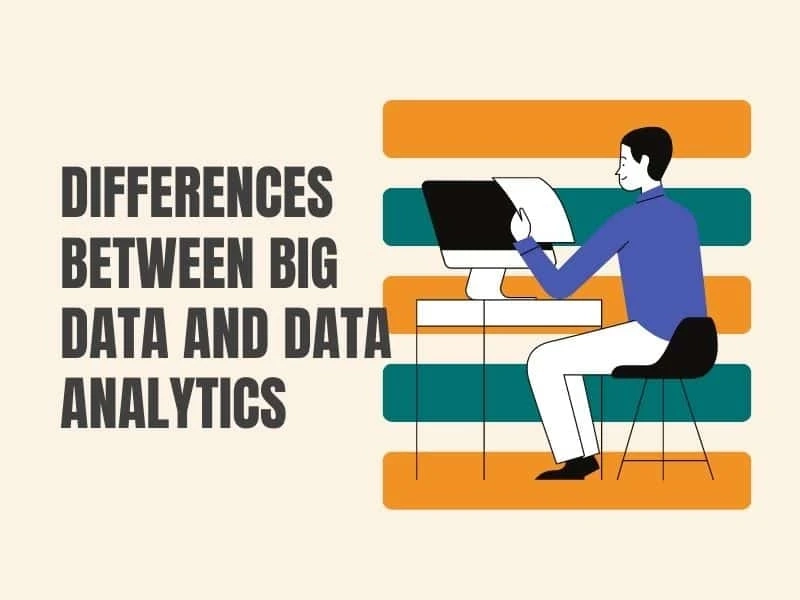Data analytics and Big Data are often used interchangeably, but there are important distinctions to make when discussing the two topics. Understanding The Differences Between Big Data and Data Analytics can help you make informed business decisions.
Definition of Big Data
What is Big Data? It\'s a collection of large datasets that can be used to analyze trends and draw insights. It’s generally too large or complex for traditional data processing techniques to handle.
Big Data is often used in combination with data analytics, which involves using statistical tools or algorithms to interpret or extract information from the data. Analytics can help uncover things such as correlations and patterns between different datasets. Together, Big Data and analytics can provide faster insights than traditional methods, making them increasingly important in our increasingly digital world.
Definition of Data Analytics
Data analytics is an integral part of both big data and data science, but the two terms are not interchangeable. Big Data refers to the collection and storage of massive amounts of data, while Data Analytics focuses on methods that enable the analysis, exploration and interpretation of the stored data. See more details about Professional Courses
Data sources from which to draw are organized into a structured database to be examined; this raw data can then be classified and structured so that it can be effectively analyzed. During the cleaning and preparation stage, any external biases are eliminated, such as outliers or other factors that could distort results. Once cleaned, it’s time for the actual mining and analysis process to begin. This part involves uncovering both implicit and explicit patterns within the gathered data to better understand its meaning.
All findings must be represented intuitively. Through sophisticated visualization tools like scatter plots or histograms, complex relationships between different variables can be highlighted more easily, allowing for easier analysis by non-experts as well. With visualizations complete, all findings can now be reported back to stakeholders for review and consideration.
How Big Data and Data Analytics are Connected
Big Data and data analytics have become key components in many organizations’ business processes. While they are closely connected, there are distinctions between the two that are important to know.
Big Data deals with large datasets that can range from terabytes to petabytes of information. This includes structured and unstructured information, such as transactional data, social media content, web log files, and more. Big Data allows companies to analyze trends over time, identify patterns in customer behaviours, and draw insights about their target market.
The connection between Big Data and data analytics lies in the way these two elements interact with each other. By gathering large amounts of data through Big Data initiatives such as Hadoop or Spark clusters and storing it in databases like MongoDB or Cassandra, businesses can then leverage data analytics tools like Tableau or QlikView to create visualizations that provide better insights into their customers’ behaviours. Through this process of gathering vast amounts of data and then using advanced analytical techniques to analyze it, businesses can ultimately gain access to valuable knowledge about their customers—information that will enable them to better serve their consumers and grow their businesses. Read more Course Reviews.
Differences Between Big Data and Data Analytics
Big Data and Data Analytics are two related concepts that both involve the processing of large amounts of structured and unstructured data. This article will help you understand how these topics compare and contrast, their associated volume/variety/velocity considerations, algorithms/analysis methods utilized, storage & processing techniques adopted, as well as the tools & techniques used to gain meaningful insights from it all.
Big Data refers to datasets that are too massive or complex for traditional forms of analytical processing. The most commonly accepted definition attributes three unique concepts to its definition – Volume, Variety & Velocity – that separates it from more conventional forms of data handling:
Volume: The dataset is so massive in size that traditional systems cannot effectively capture or process it;
Variety: The dataset consists of multiple different types of source data such as text, audio, video & images;
Velocity: This immense amount of varied data must be effectively processed at a rapid rate for meaningful results.
Analytics Jobs
Data Analytics is typically thought of as what comes after Big Data has been adequately collected and processed. Simply put – with Big Data comes Data Analytics – which uses sophisticated algorithms & analysis methods to uncover hidden patterns & trends in this enormous pool of structured & unstructured information and gain actionable insights from it.



